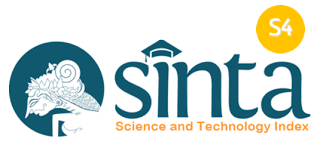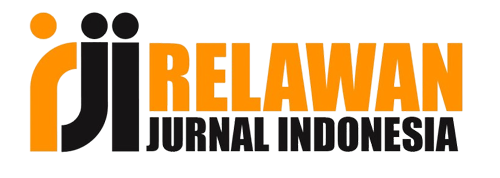Students’ Perception on the Use of AI Paraphrasing Tools in Writing Research Proposal
Abstract
The use of AI Paraphrasing Tools in education creates a conflict. These tools offer potential benefits for student writing, but their improper use raises serious concerns about plagiarism. This study aims to investigate students' perceptions of AI paraphrasing tools in research proposal writing. The scope of this research includes the advantages and disadvantages of AI paraphrasing tools. The participants of this study were 23 students from the English Language Education Program at the State Islamic Institute of Manado for the 2020/2021 academic year. This study employed a qualitative research method, and the researcher distributed a questionnaire to the students as an instrument. The questionnaire included 15 open-ended questions on Google Forms. The findings indicate that many students recognize the efficiency and convenience provided by these tools. They highlighted how AI paraphrasing tools can save time, improve content clarity, and assist in avoiding plagiarism. However, this study also revealed some drawbacks associated with the use of AI paraphrasing tools. The primary concern expressed by students was the potential of these tools to misinterpret the original meaning, resulting in inaccuracies and loss of context. Additionally, students noted that excessive reliance on these tools might diminish their critical thinking and creativity, ultimately hindering the development of their writing skills.
Keywords: Writing, Research Proposal, AI Paraphrasing Tools
Full Text:
PDFReferences
Ansorge, L., K, A., & M, S. (2021). Plagiarism through paraphrasing tools—The story of one plagiarized text. MDPI, 9(4). https://doi.org/https://doi.org/10.3390/publications9040048
Bailey, C., & J, W. (2018). What can screen capture reveal about students’ use of software tools when undertaking a paraphrasing task? Journal of Academic Writing, 8(2), 176–190. https://doi.org/https://doi.org/10.18552/joaw.v8i2.456
Chen, M. H., T, S, H., S, J, C., & C, H, L. (2015). Developing a corpus-based paraphrase tool to improve EFL learners’ writing skills. Computer Assisted Language Learning, 28(1), 22–40. https://doi.org/http:// doi.org/10.1080/09588221.2013.783873
Fitria, T. . (2021). QuillBot as an online tool: Students’ alternative in paraphrasing and writing of English writing. Nglisia: Journal of Language, Education, and Humanities, 9(1), 183–169. https://doi.org/https://doi.org/10.22373/ej.v9i1.10233
Inayah, N., & D.S. Sulistyaningrum. (2021). Employing online paraphrasing tools to overcome students’ difficulties in paraphrasing. Stairs: English Language Education Journal, 2(1), 52–59.
Khrismawan, B., & U, W. (2013). Students’ perceptions about paraphrasing and their cognitive processes in paraphrasing. TEFLIN Journal, 24(2), 135–157.
Miranda, D. (2021). The impact of paraphrasing tools on students’ paraphrasing skills.
Nurmayanti, N., & Suryadi. (2023). The effectiveness of using Quillbot in improving writing for students of English Education study program. Jurnal Teknologi Pendidikan: Jurnal Penelitian Dan Pengembangan Pembelajaran, 8(1), 32–40. https://doi.org/https://doi.org/10.33394/jtp.v8i1.6392
Prentice, F. M., & Kinden, E. C. (2018). Paraphrasing tools, language translation tools and plagiarism: An exploratory study. International Journal for Educational Integrity, 14(1), 1–16. https://doi.org/https://doi.org/10.1007/s40979-018-0036-7
Prentice, F. M., & Kinden, E. C. (2019). An exploration of the identification of the use of paraphrasing tools and online language translation tools in student academic texts. 5th International Conference: Plagiarism Across Europe and Beyond & 3rd International Conference: Shaping Ethics in Academia and Society, Vilnius, Lithuania.
Rahmatunisa, W. (2014). Problems Faced by Indonesian EFL Learners in Writing Argumentative Essay. English Review: Journal of English Education, 3(1), 41–49.
Rahmayani, S. . (2018). Students’ difficulties in paraphrasing English texts.
Roe, J., & Perkins, M. (2022). What are automated paraphrasing tools and how do we address them? A review of a growing threat to academic integrity. International Journal for Educational Integrity, 18(1). https://doi.org/https://doi.org/10.1007/s40979-022-00109-w
Rogerson, A. M., & G, M. (2017). Using Internet-based paraphrasing tools: Original work, patchwriting or facilitated plagiarism. International Journal for Educational Integrity, 13(1). https://doi.org/https://doi.org/10.1007/s40979-016-0013-y
Syahnaz, M., & R, F. (2023). Utilizing artificial intelligence-based paraphrasing tools in EFL writing class: A focus on Indonesian university students’ perceptions. Scope: Journal of English Language Teaching, 7(2), 210–218. https://doi.org/http://dx.doi.org/10.30998/scope.v7i2.1488
Tran, T. T. T., & Nguyen, B. H. (2022). The effects of paraphrasing on EFL students’ academic writing. Journal of Language and Linguistic Studies, 18(1), 976–987.
Yan, D. (2023). Impact of ChatGPT on learners in a L2 writing practicum: An exploratory investigation. Education and Information Technologies. Advance Online Publication. https://doi.org/https://doi.org/10.1007/s10639-023-11742-4
DOI: http://dx.doi.org/10.30984/jeltis.v4i2.3260
Article Metrics
Abstract view : 158 timesPDF - 85 times
Refbacks
- There are currently no refbacks.







